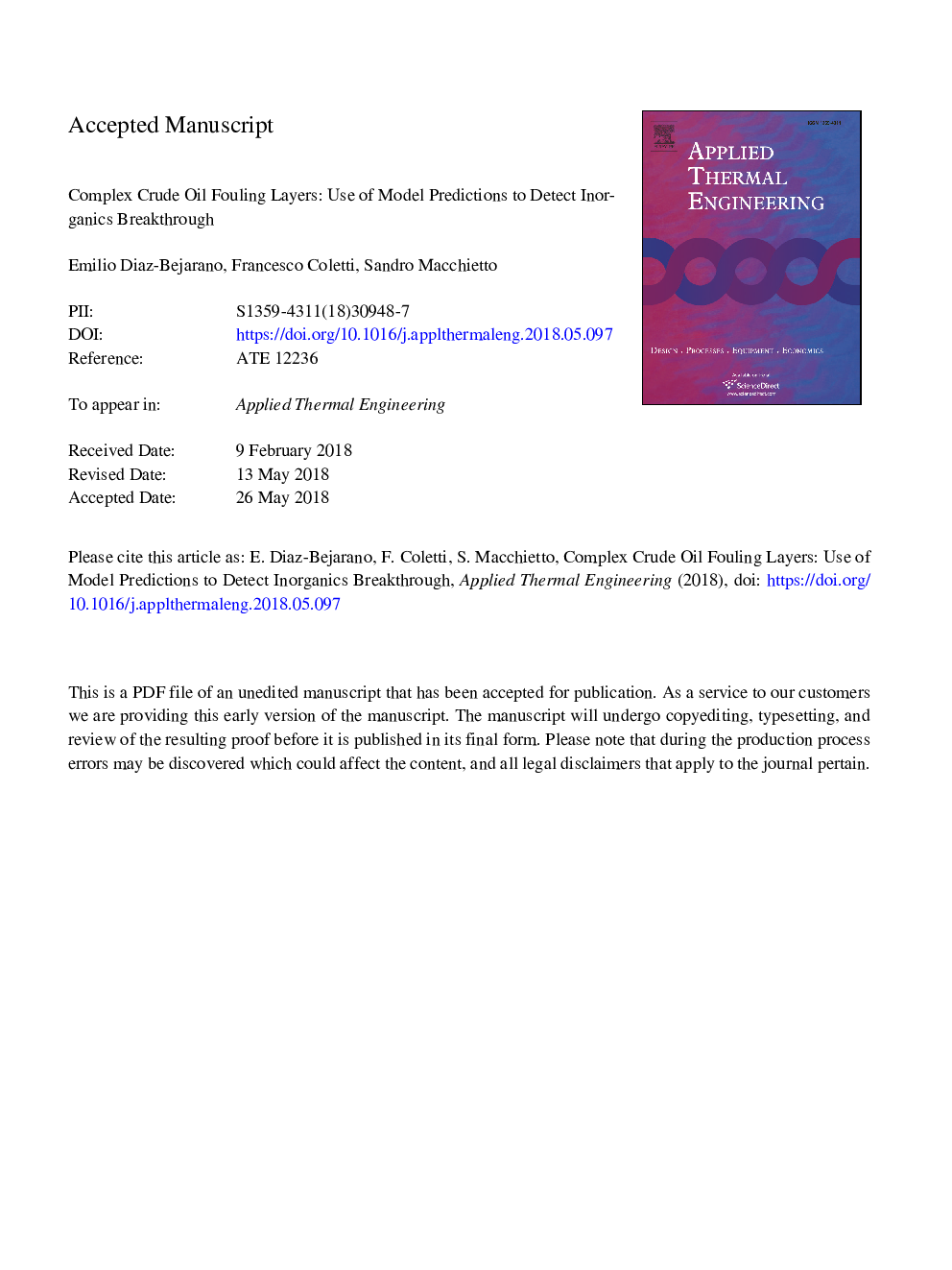| Article ID | Journal | Published Year | Pages | File Type |
|---|---|---|---|---|
| 7044990 | Applied Thermal Engineering | 2018 | 30 Pages |
Abstract
Crude oil fouling models have greatly improved in the past two decades. However, most models focus on the deposition of organic species at high temperatures (i.e. greater than 200â¯Â°C). In this paper, a deposit model, capable of capturing simultaneously the deposition of both organic and inorganic species, is used to track deposition history in a shell-and-tube heat exchanger at the hot end of a refinery pre-heat train. The model was previously fitted to plant data and the results compared to the experimental characterization of deposits. It is shown that such a model, together with plant data, can be used (i) to describe the development of complex deposit layers; (ii) to detect and diagnose changes in composition of the deposit. From a practical perspective, it is then possible to alert plant operators of unexpected events such as breakthrough of inorganics at an early stage and help in planning corrective actions.
Related Topics
Physical Sciences and Engineering
Chemical Engineering
Fluid Flow and Transfer Processes
Authors
Emilio Diaz-Bejarano, Francesco Coletti, Sandro Macchietto,
